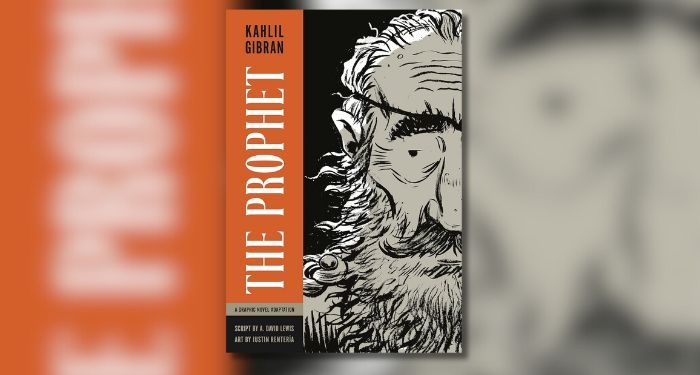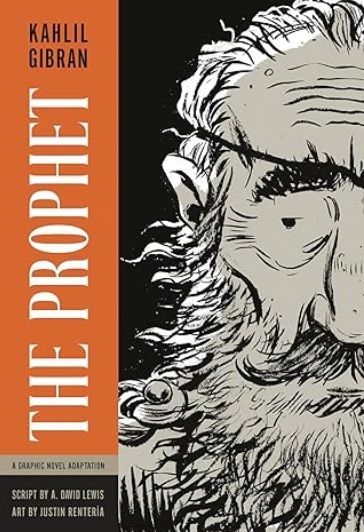Book Riot has talked a lot about graphic novel adaptations. What’s up with those, anyway? When did we start trying to adapt prose novels into comics, and why? To help me answer these questions, I spoke with A. David Lewis, who, along with artist Justin Rentería, took on the challenge of adapting Kahlil Gibran’s seminal book of verse poetry, The Prophet.
You can trace the idea of turning a “regular” book into a comic at least as far back as the series Classics Illustrated, launched in 1941. Though it mostly focused on novels by older, white, male authors, its first issue covered The Three Musketeers by Dumas. (Whether the creators realized Dumas was Black is probably an unanswerable question.)
How does one go about selecting a title for adaptation? For Lewis, it was as straightforward as keeping an eye on relevant dates:
“I had spotted The Prophet on an upcoming list of titles [about to enter the public domain] some time ago,” he said, “and this gave me the opportunity to think about, if it were to become a comic, how one would go about doing that. Serendipitously, such an adaptation could be available in time for the 100th anniversary, and I wanted to celebrate both the poem’s publication and its enduring legacy.”
Since the original Classics Illustrated ended in 1969, other publishers have jumped into the game, adapting a much more diverse array of books by the likes of Rainbow Rowell, Nikki Grimes, and Meg Medina. The Baby-Sitters’ Club and other ’90s classics are being adapted and updated for a new generation. Even nonfiction writers like Timothy Snyder and Ibram X. Kendi are getting the graphic novel treatment. Hewing more closely to the tradition started by Classics Illustrated are adaptations of works by Octavia E. Butler, Madeleine L’Engle, Haruki Murakami, and, of course, Kahlil Gibran.
The Prophet is a simple tale that would seem to defy adaptation. The titular character, Almustafa, is about to return to his homeland after years in exile. Before he goes, villagers gather around and ask for advice on a wide range of subjects, which he provides in a lyrical, profound way.
Retaining the magic of the original was not easy. As Lewis explained, “I had to be careful about adding too much new material…I wanted to amplify what was already there. Bringing it into the comics medium was a large enough shift that I didn’t want to do any damage to the original poem.”
Both he and Justin Rentería drew on many different sources to bring their adaptation to life in a unique yet recognizable way.
“Justin and I looked to Gibran’s own biography for some leads as well as his own art for cues and suggestions,” Lewis told me, later adding, “Almustafa’s advice to the masses sounded somewhat like Jesus and the Beatitudes…or, more accurately, their own adaptation from the pages of the New Testament to their performance on stage in the musical Godspell. With that as my figurative (as well as literal) soundtrack, and with Justin’s own research into buildings and styles of the Ottoman Empire that included Gibran’s homeland of Lebanon, we were able to find a solid spine for the atypical story.”
For an adaptation to succeed, Lewis believes that the original material must be “rich in imagery” but “still leave room for the reader’s own imagination.”
“I tend to look for powerful, important stories that have left some space in their lines, deliberately or otherwise, as the best candidates for comics adaptation,” he explained. “It’s not about filling the gaps or the gutters with my specific interpretation; it’s about inviting readers into that space with me and discovering new dimensions to the legendary stories.”
So there you have it: the secret of making a great graphic novel adaptation. Now go forth and make your own!







